Large Than Most, He Wears A Tail Borrowed From Another Bird, He Finishes His Look Off With A Bright Yellow Neck Patch!
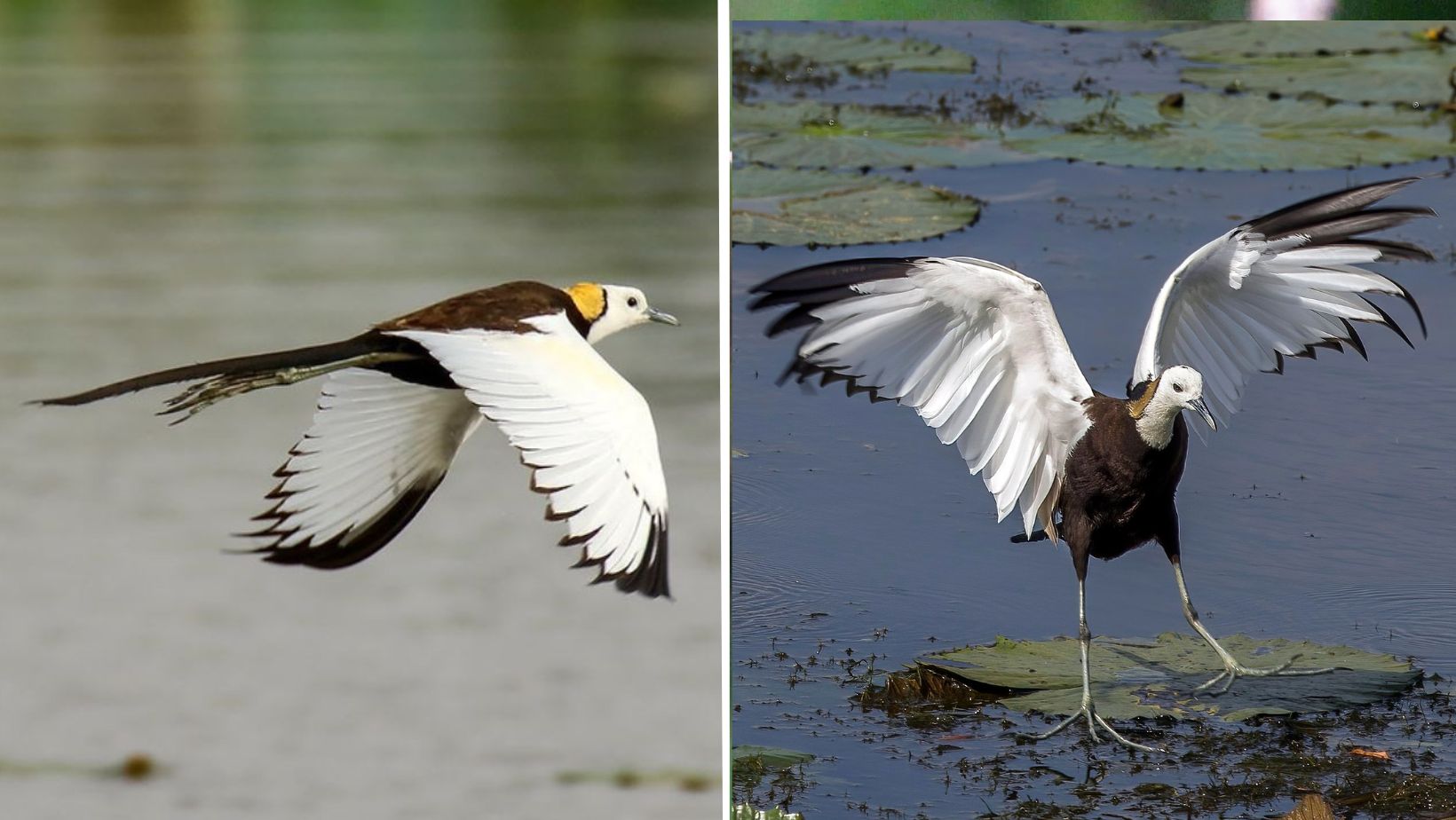
A large eye-catching waterbird with a white wing patch and head which contrasts sharply with its black body and bright yellow neck patch.
Meet the Pheasant-tailed Jacana
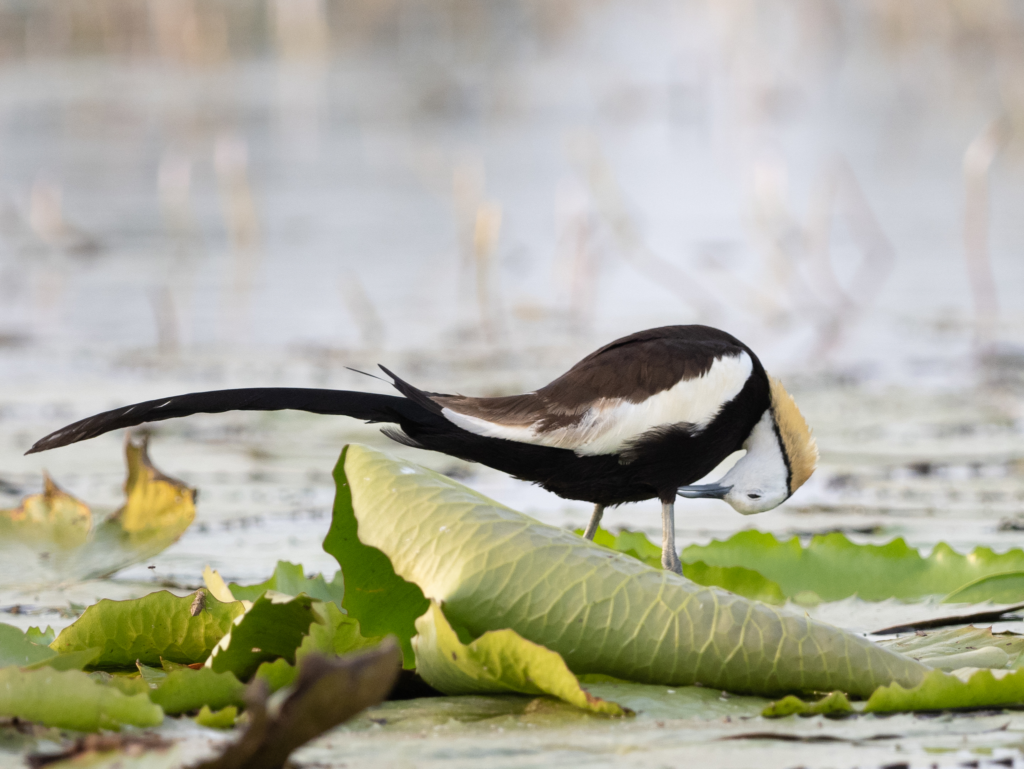
The Pheasant-tailed Jacana is a unique species within the Jacanidae family, known for its distinct plumage during the breeding season. With its long tail, this bird displays remarkable grace while walking on floating vegetation. During the breeding season, the adult Pheasant-tailed Jacana showcases brown upperparts that contrast with a bright white wing panel. The upperwing is predominantly white with a black tip, while the outermost primary flight feathers are black, and the rest have black tips. A striking feature is the sharply pointed, whitish spur at the bend of the wing. The long tail, ranging from blackish-brown to pale brown, is graduated with elongated central rectrices measuring between 19 and 38 cm. The underparts are dark blackish-brown in color. In non-breeding plumage, the Pheasant-tailed Jacana’s tail becomes much shorter, measuring around 11-12 cm. The upperparts appear paler with a greenish-brown hue. The crown and hindneck take on a blackish shade, while the neck sides become dull golden-yellow. An eye-stripe of blackish-brown extends down to the neck sides, forming a dark breast band. The underparts, in contrast, become white.
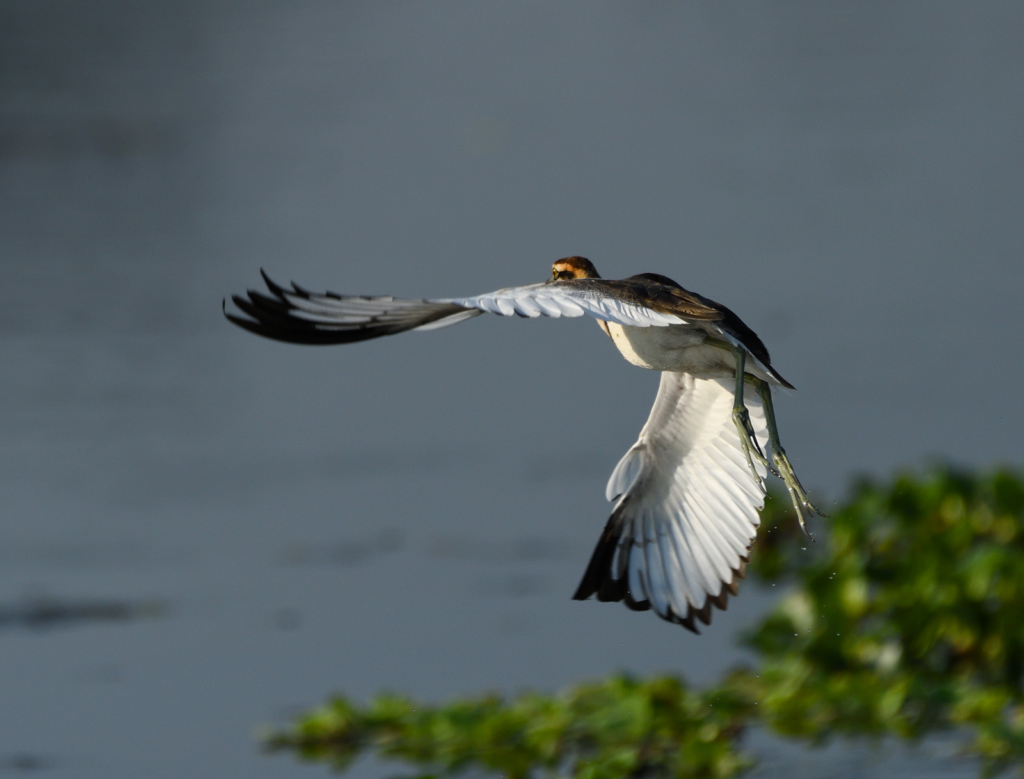
Females resemble males in terms of plumage, but they are noticeably larger in size. Both sexes possess a slaty-blue bill with a yellowish tip during the breeding season. In non-breeding plumage, the bill turns brown with a yellowish base. The eyes of both males and females are brown. The legs and long, slender toes are blue-grey during the breeding season, while they appear greenish or bluish-grey in non-breeding plumage.
Related Reading:
Juveniles resemble adult birds in their winter plumage, but they have a paler back. The yellow coloration on the neck sides is absent, and the breast band appears indistinct.
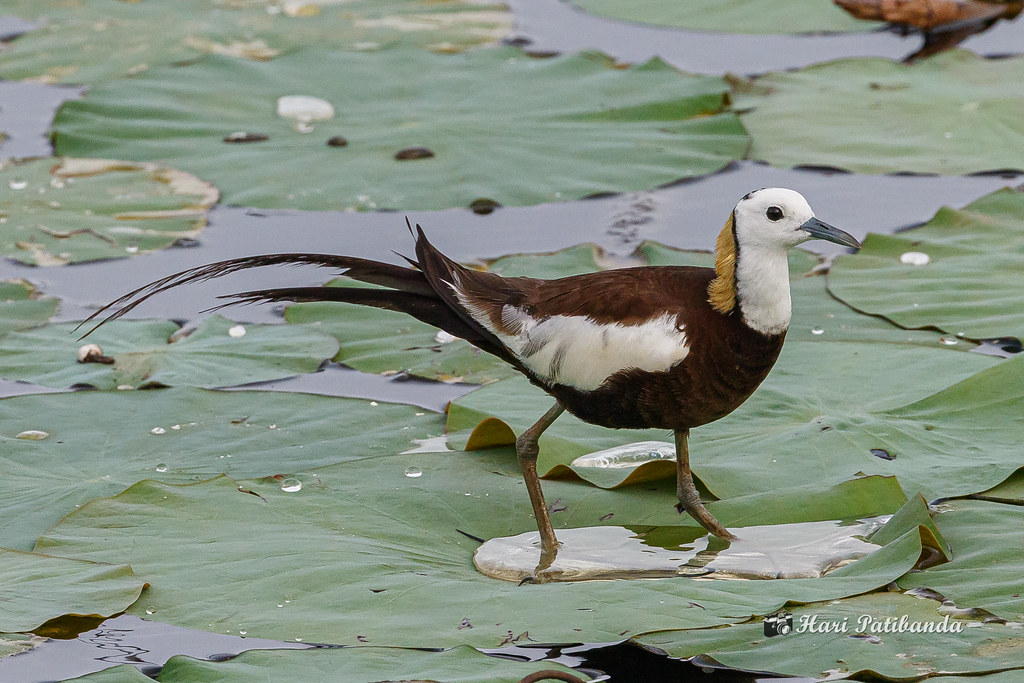
The breeding range of the Pheasant-tailed Jacana includes India, Southeast Asia, and Indonesia. During the winter months, the northernmost populations migrate from the upper Himalayas and southern China to Peninsular India and Southeast Asia. However, the species is sedentary across most of its range, with local movements occurring in response to changing conditions and water levels. This migratory pattern sets it apart from other jacana species, which tend to be more sedentary.
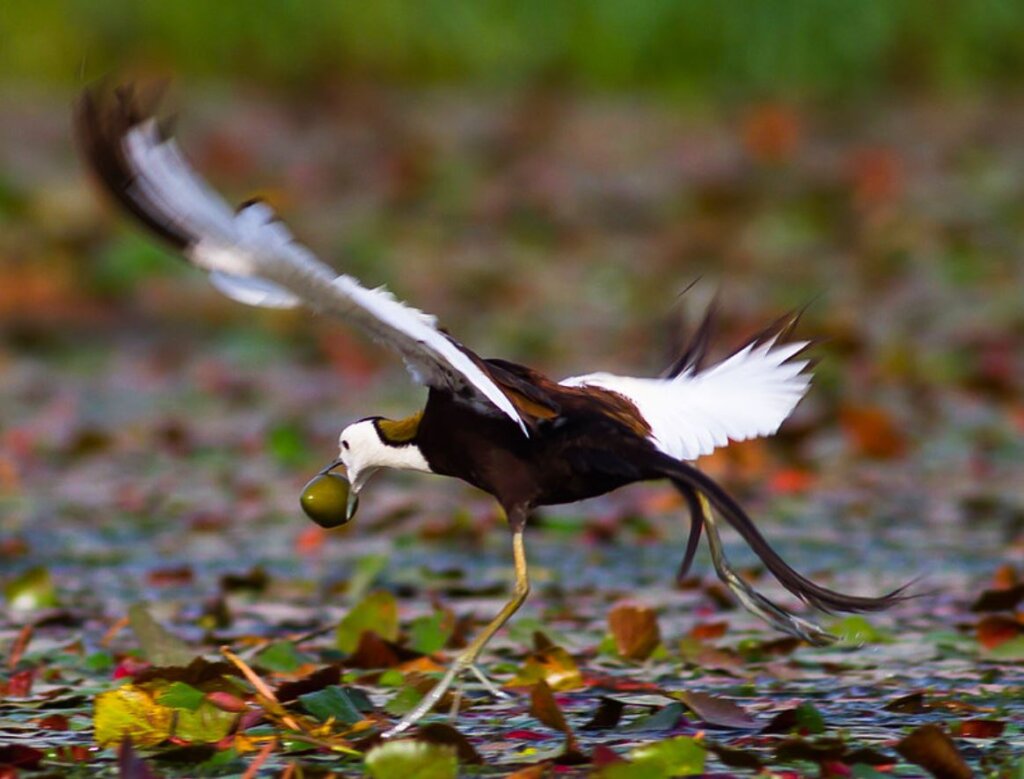
This species predominantly inhabits large freshwater wetlands, lakes, and ponds that contain emergent and floating vegetation, particularly those with lotus, waterlilies, and similar aquatic plants.
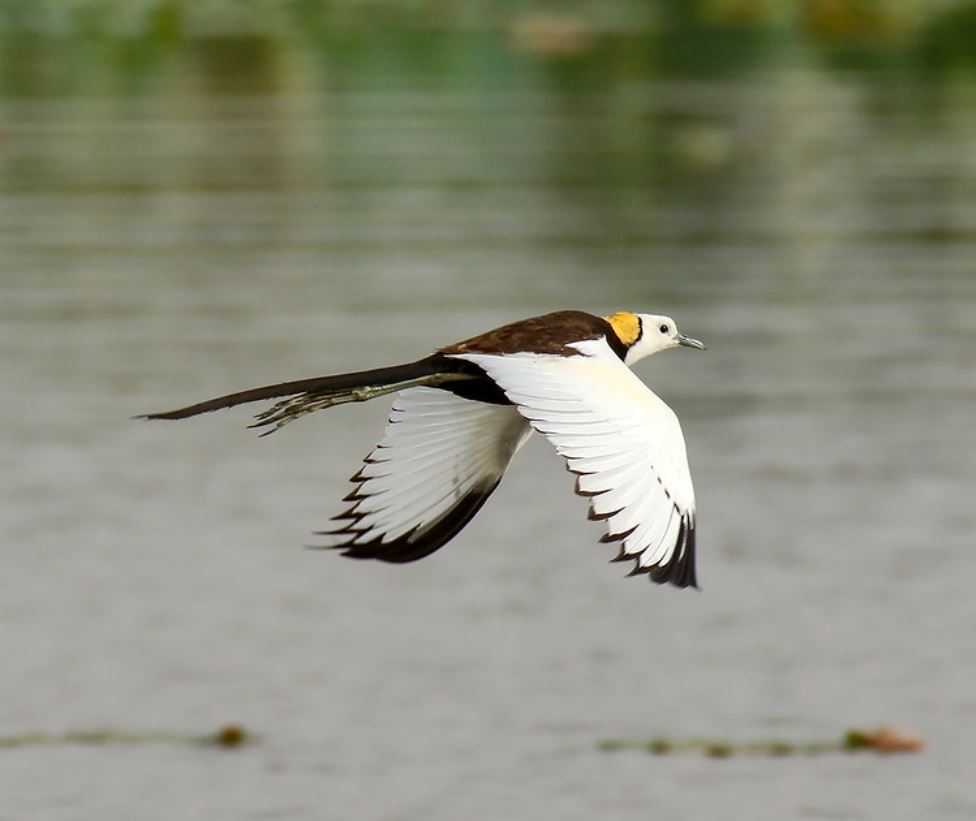
The Pheasant-tailed Jacana’s diet primarily consists of insects from the water surface and invertebrates picked from the roots and leaves of aquatic vegetation. It grasps the roots with its bill and extracts snails, crustaceans, and other invertebrates. Prey items are also obtained from the underside of water-lily leaves. Additionally, small amounts of vegetation such as seeds and ovules from lotus and water-lilies are consumed.
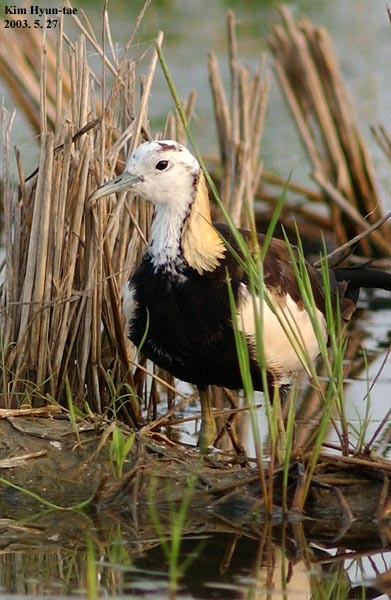
The breeding season for the Pheasant-tailed Jacana (Hydrophasianus chirurgus) occurs during the summer months in the northern parts of its range, while in India, Sri Lanka, and Southeast Asia, it corresponds to the wet or monsoon months. The bird constructs its nest on floating vegetation using stems and pieces of aquatic plants. Initially built by the male, these nests can be destroyed by rising water levels, prompting the male to move the clutch to a drier location. The male carries the eggs between its throat and breast while walking backward on the floating vegetation. The female lays four olive-brown glossy eggs that are noticeably pear-shaped and unmarked. Replacement clutches may also be laid. Although the incubation period is unknown, it is performed solely by the male, who also takes on the majority of nesting duties. However, the female aids in territory defense. The incubating male does not copulate during this period. The downy chicks have white underparts and brown stripes above. They can remain with the male for up to two months and display the ability to run, swim, and dive as soon as they leave the nest. When threatened, the chicks can submerge themselves almost completely under a floating leaf upon receiving an alarm signal from their father.
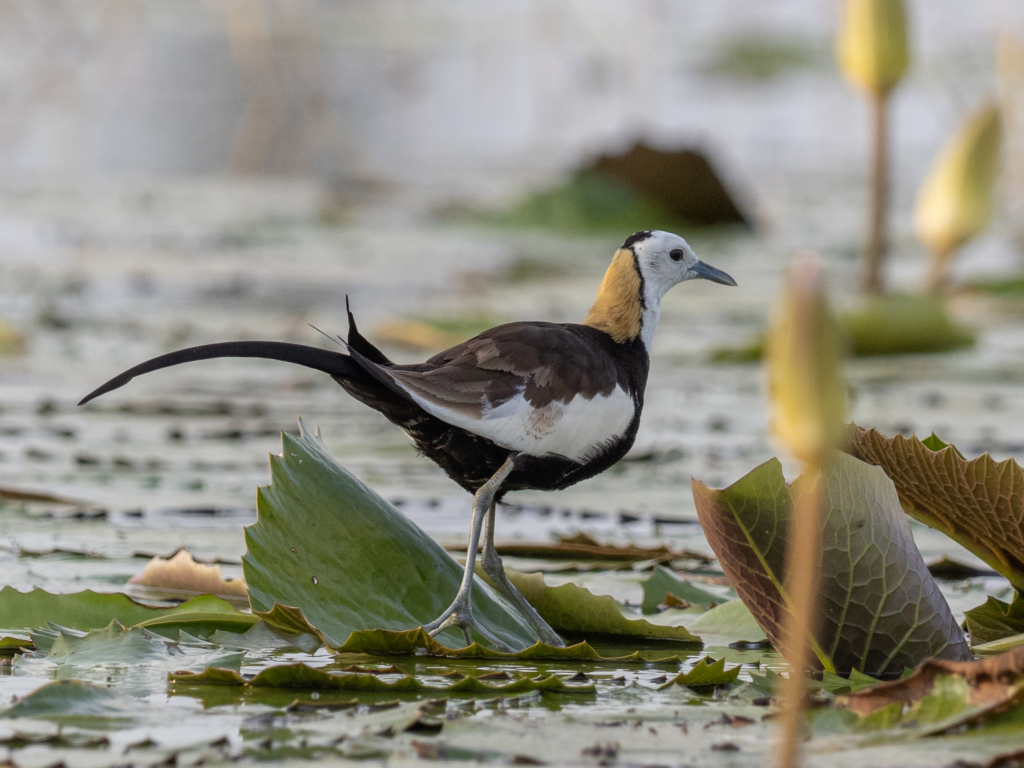
The mating system of the Pheasant-tailed Jacana is polyandrous, allowing females to mate with multiple males. However, this behavior is influenced by the size and quality of the male’s territory. Notably, the breeding behavior of the Pheasant-tailed Jacana is reversed, with males taking on most of the nesting duties such as nest building, incubation, brooding the eggs, and caring for the precocial chicks during feeding. The female, on the other hand, focuses on predator defense, preening, and resting in close proximity to the young, remaining vigilant against intruders and predators while they feed.
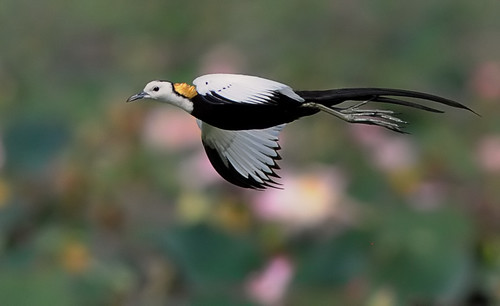
Competition for mates can be intense, often leading to interactions between females. A single female may lay several clutches per season, sometimes up to ten, which contributes to population stability despite the loss of numerous nests and eggs.
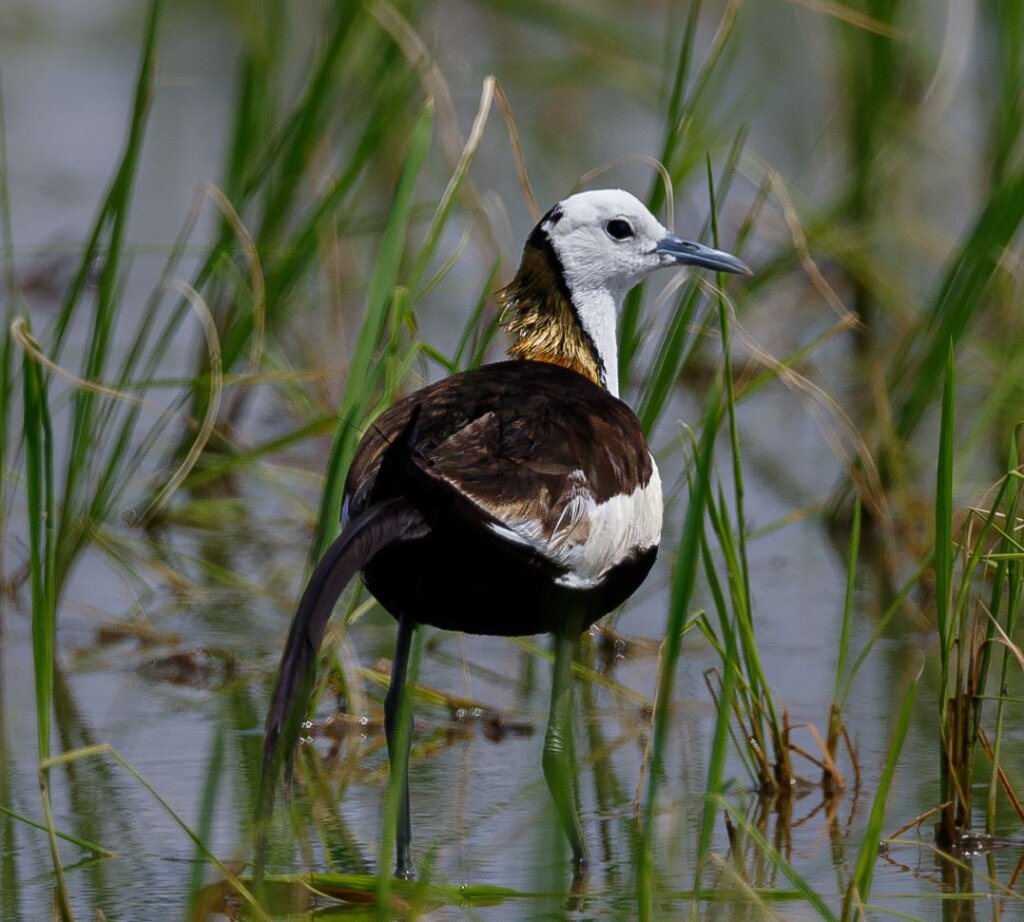
The vocalizations of the Pheasant-tailed Jacana include a far-carrying, mewing call of “me-e-ou” during the breeding season, along with variations like “me-onp” and shorter renditions. In winter, they emit nasal sounds resembling “tewn” while in flocks.
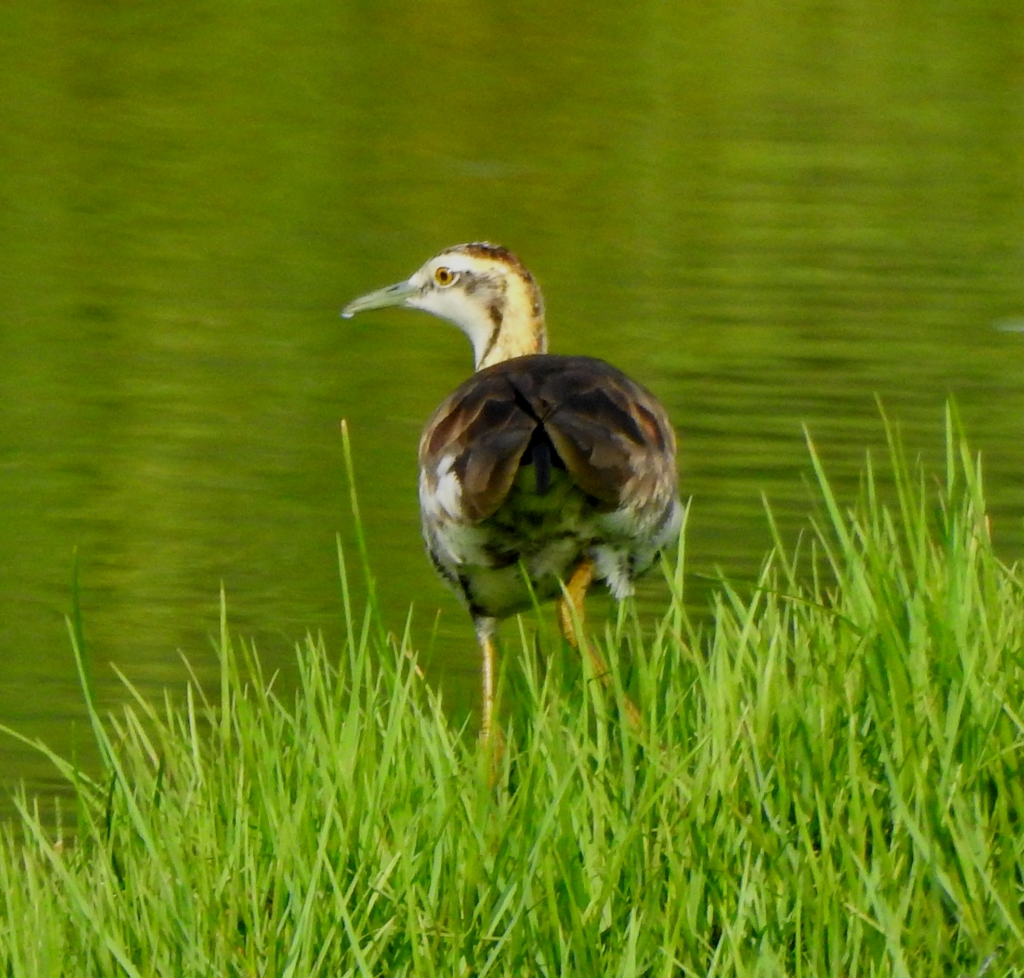
In terms of flight, the Pheasant-tailed Jacana is a strong flier, unlike other jacana species. It displays rapid wing beats during flight, with legs and feet trailing behind the body during prolonged flights. During shorter flights and hovering, the long feet dangle beneath the bird.
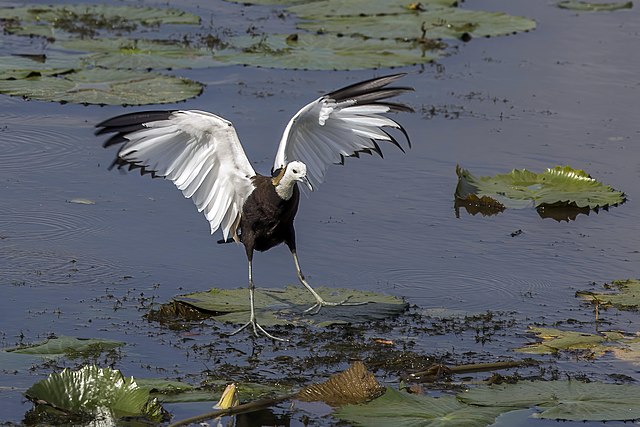
When faced with predators or intruders, the Pheasant-tailed Jacana displays threat behaviors, including a slightly crouched posture with the neck and head raised, and wings partially or fully extended laterally. These displays reveal the yellow carpal spurs, which serve as important fighting weapons. The bird may also raise its wings vertically as a visual signal in response to social behaviors or in defense against other bird species’ invasion. Raucous calls are given by the owner when intruders or predators fly across the bird’s territory. Outside the breeding season, the Pheasant-tailed Jacana exhibits gregarious behavior.
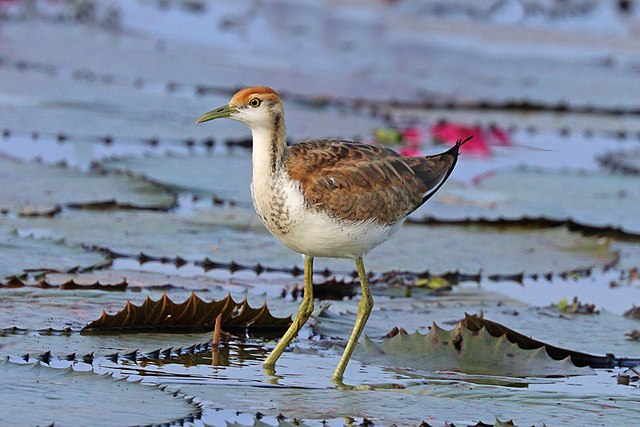
The Pheasant-tailed Jacana faces threats from the drainage of wetlands for agricultural expansion and disturbances caused by human activities in shallow water, resulting in the loss of nests and eggs. While the species is not globally threatened at present, localized declines have been observed, particularly in Eastern China.
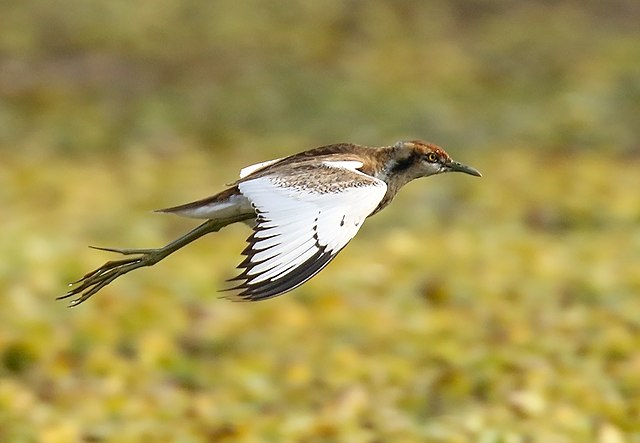
Listen to this bird right here:
This article uses material from Wikipedia.org which is licensed under the GNU Free Documentation License via Copyright Wikipedia. Images on this page are the sole property of the photographers (unless marked as Public Domain). Please read the license and or contact the photographers directly before using them for any purpose. Thank you all.
Covered In Metallic Shades Of Copper, And Green, This Vibrantly Colored Bird Looks Very Much Like A Hummingbird, But He’s Not!
Please SHARE this article with all your bird-loving friends and family.






